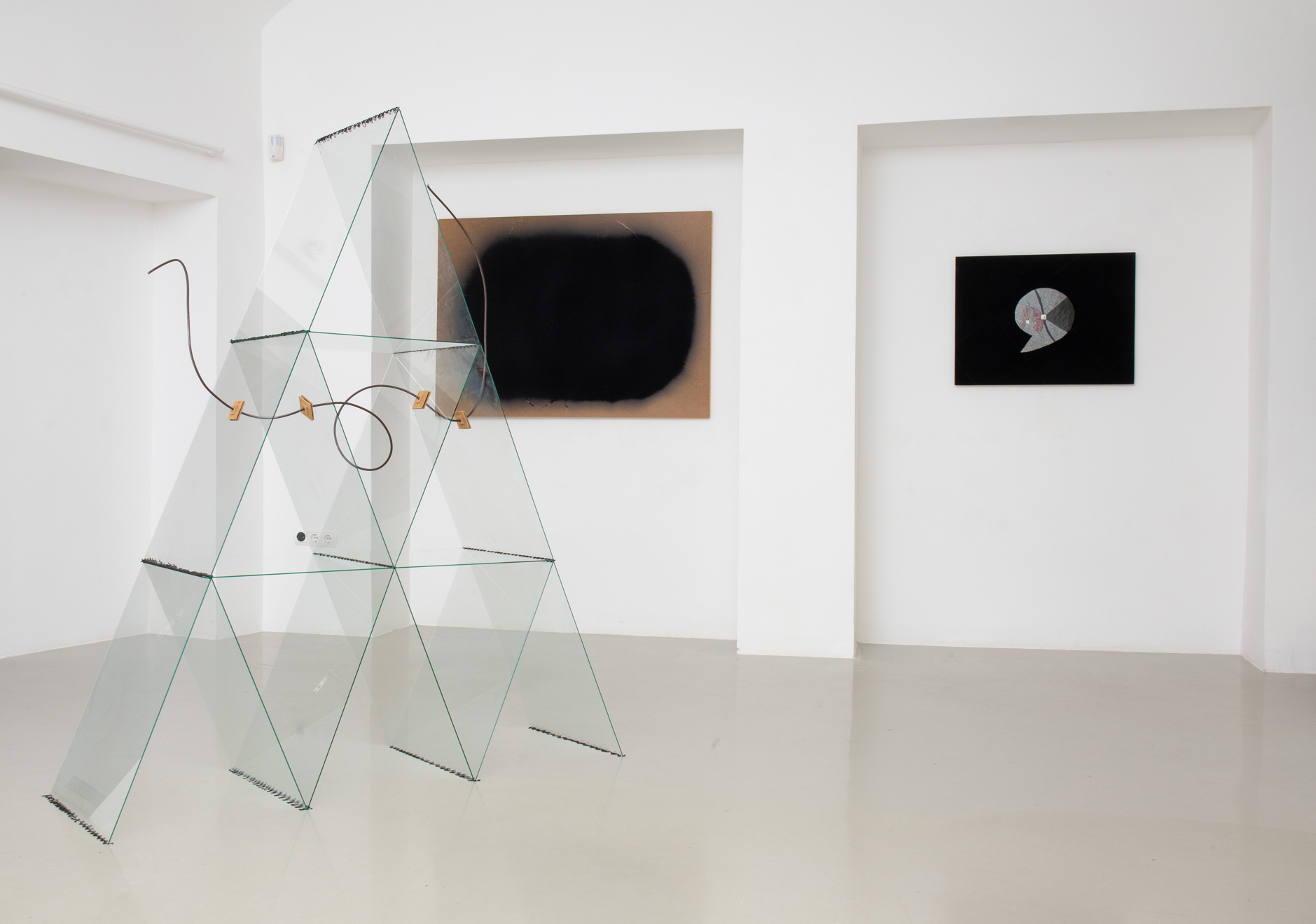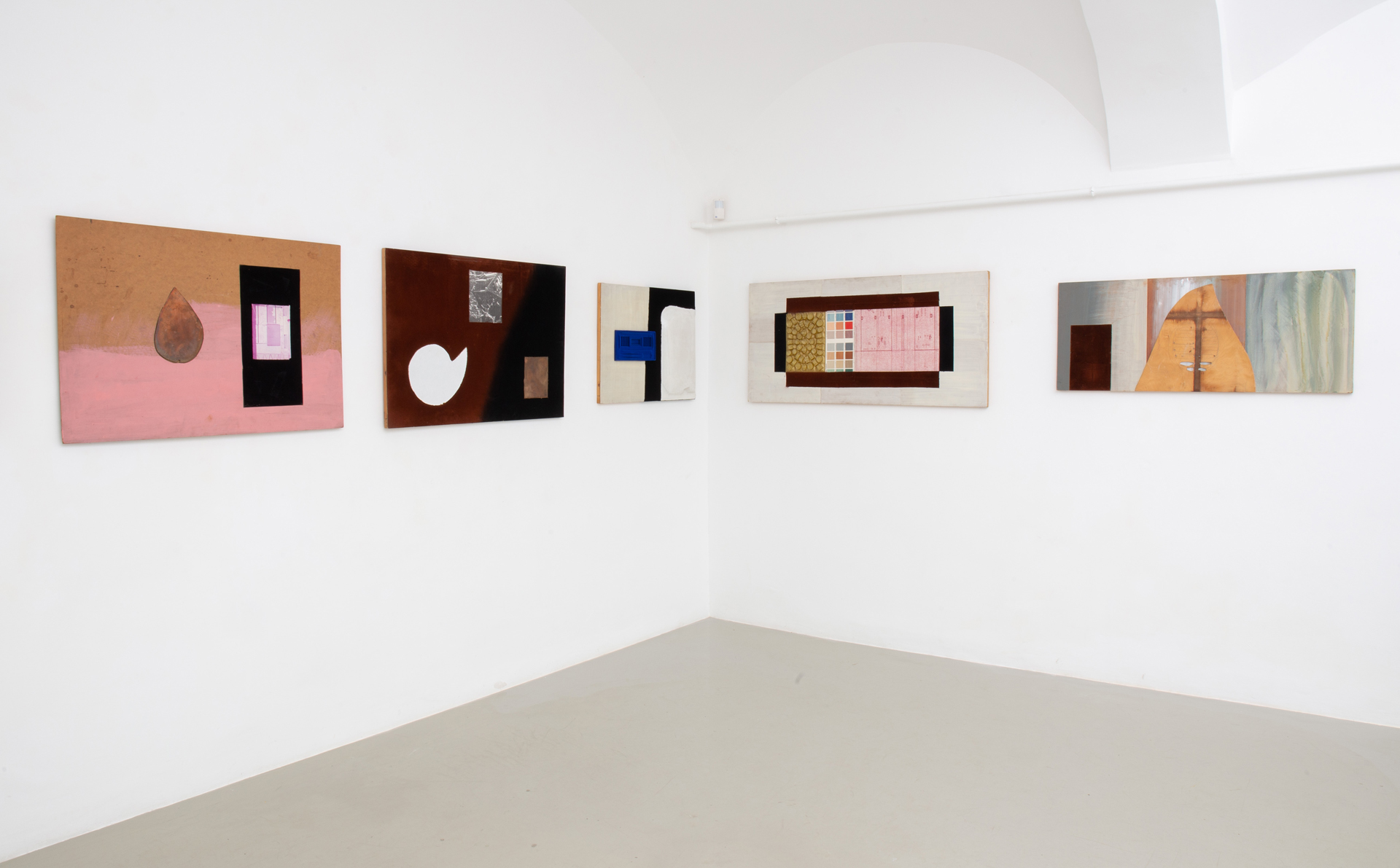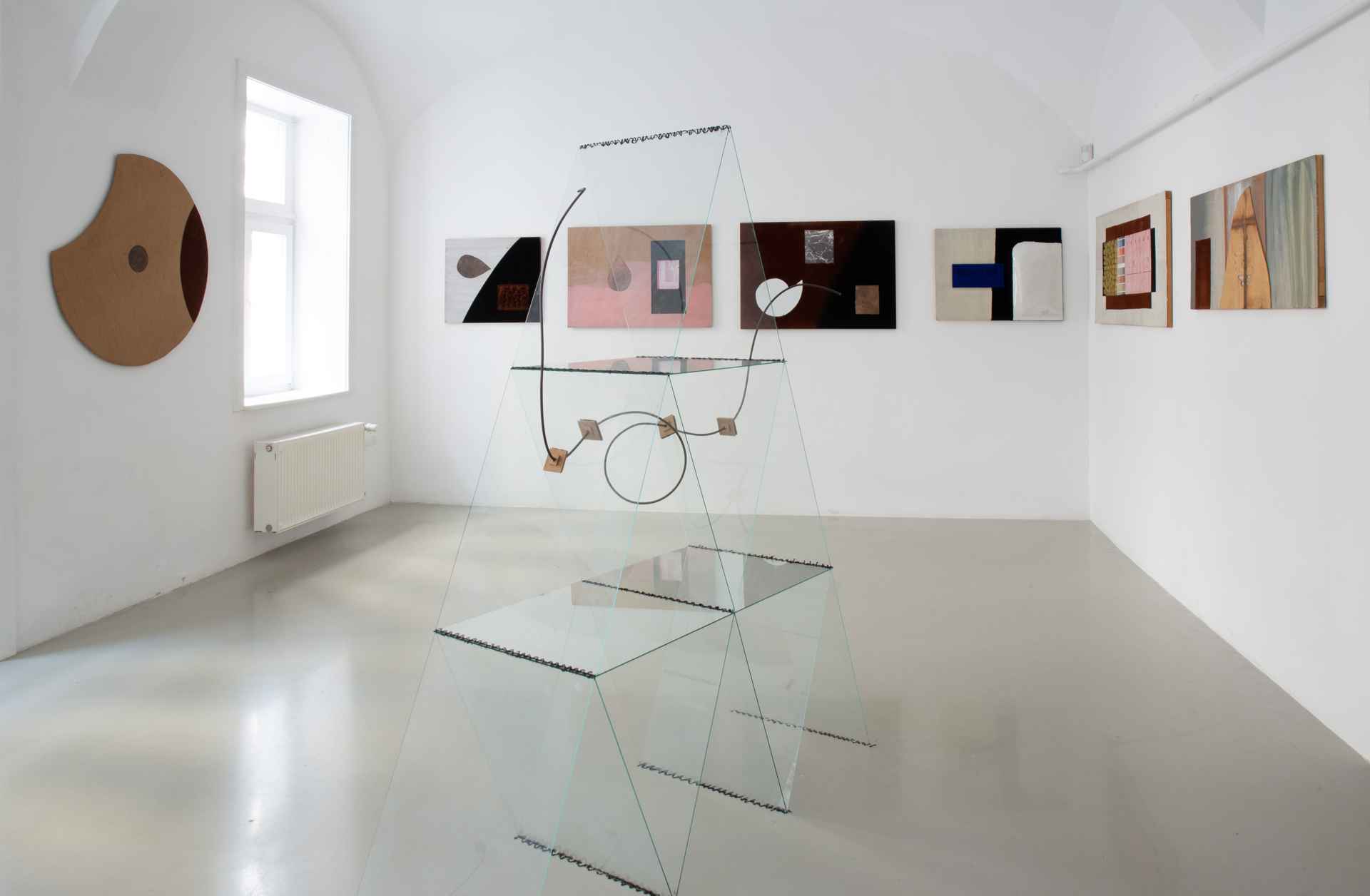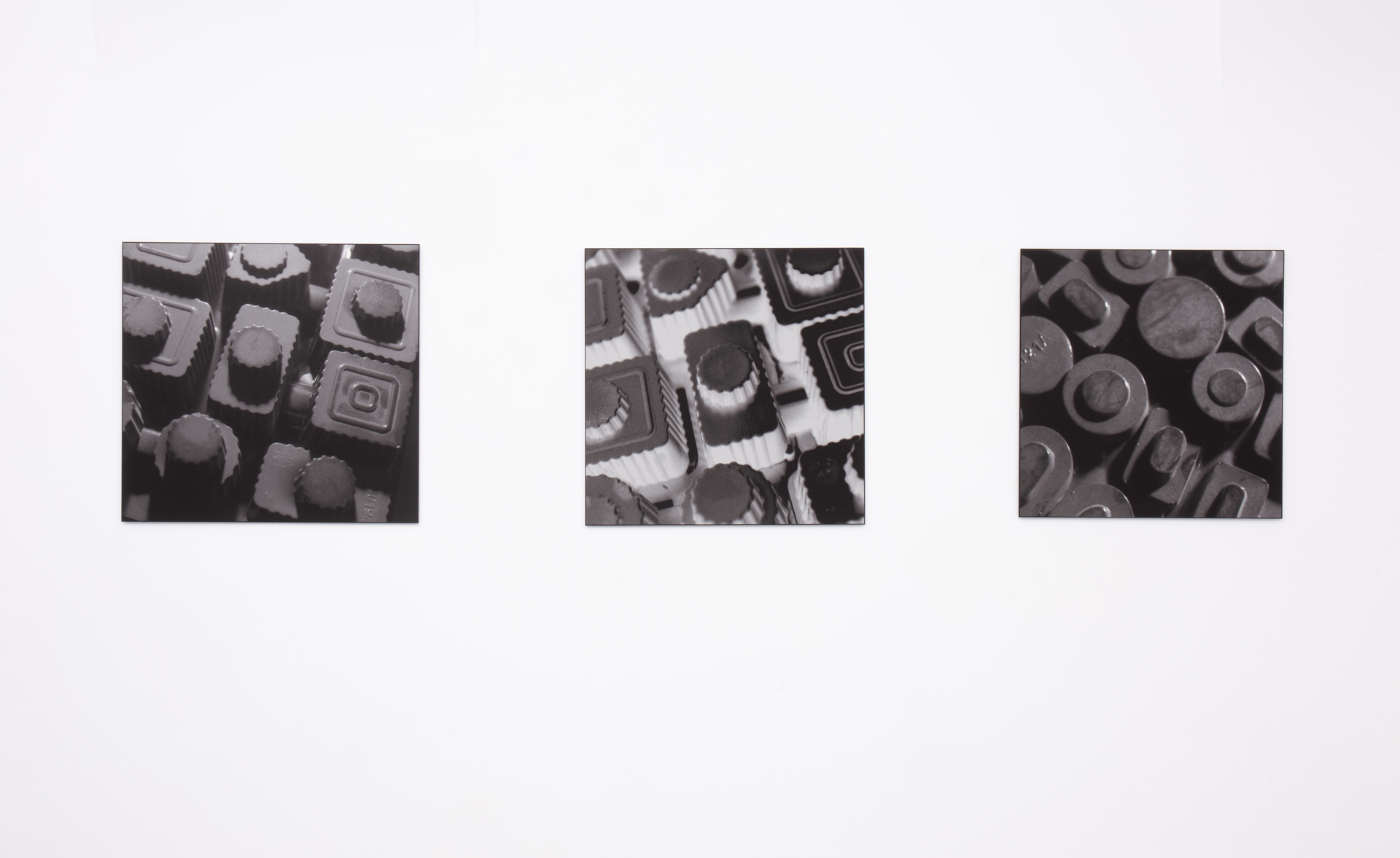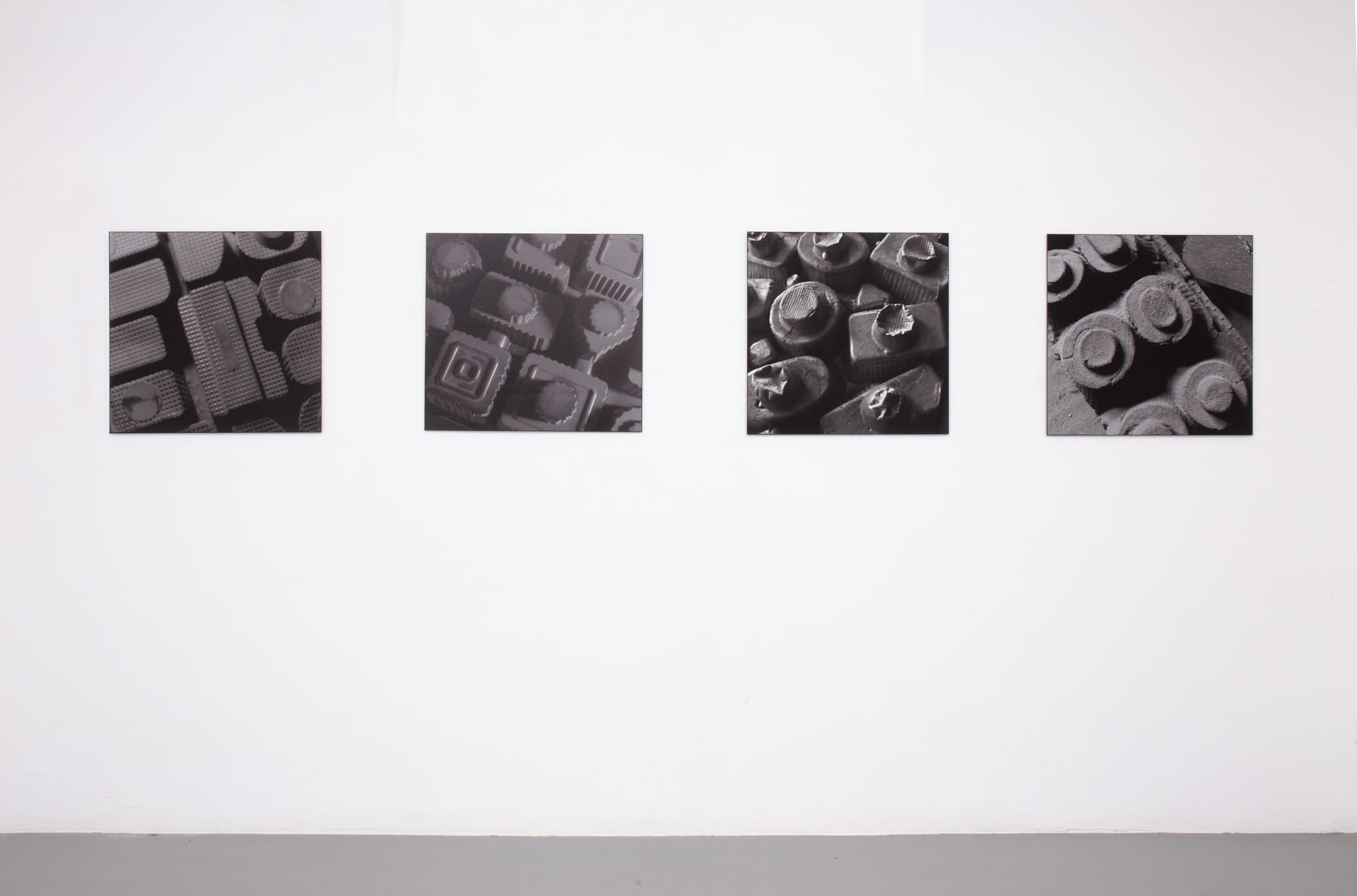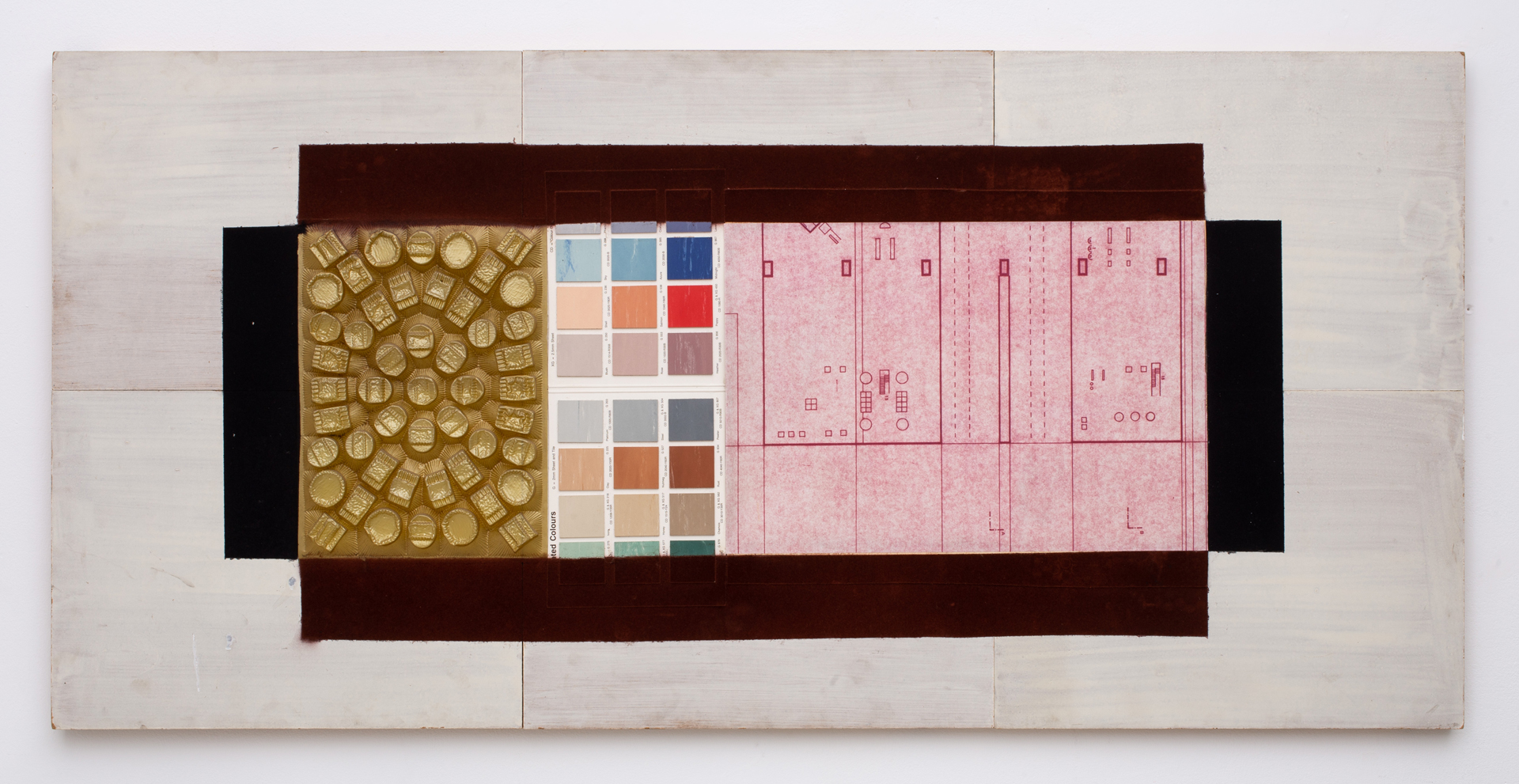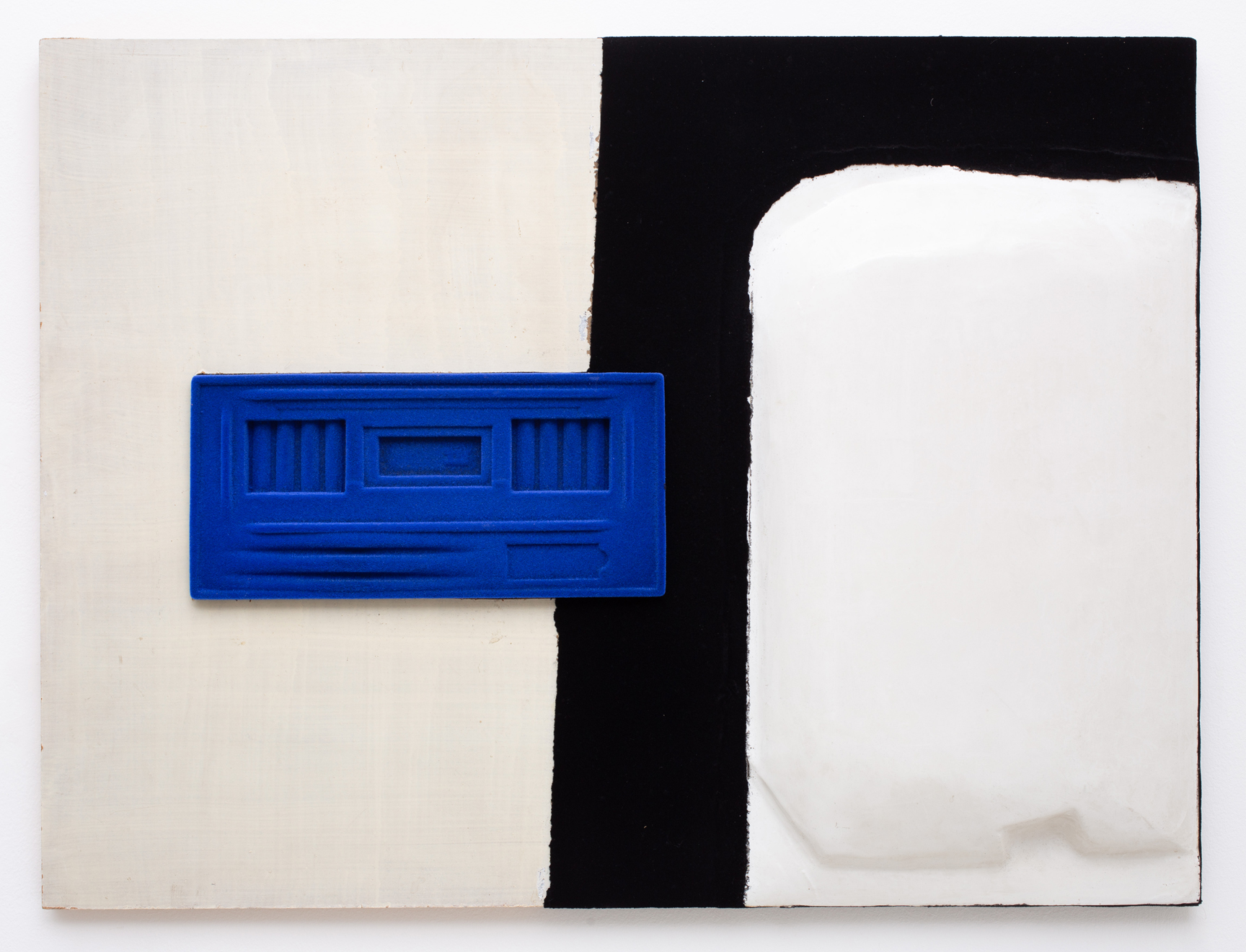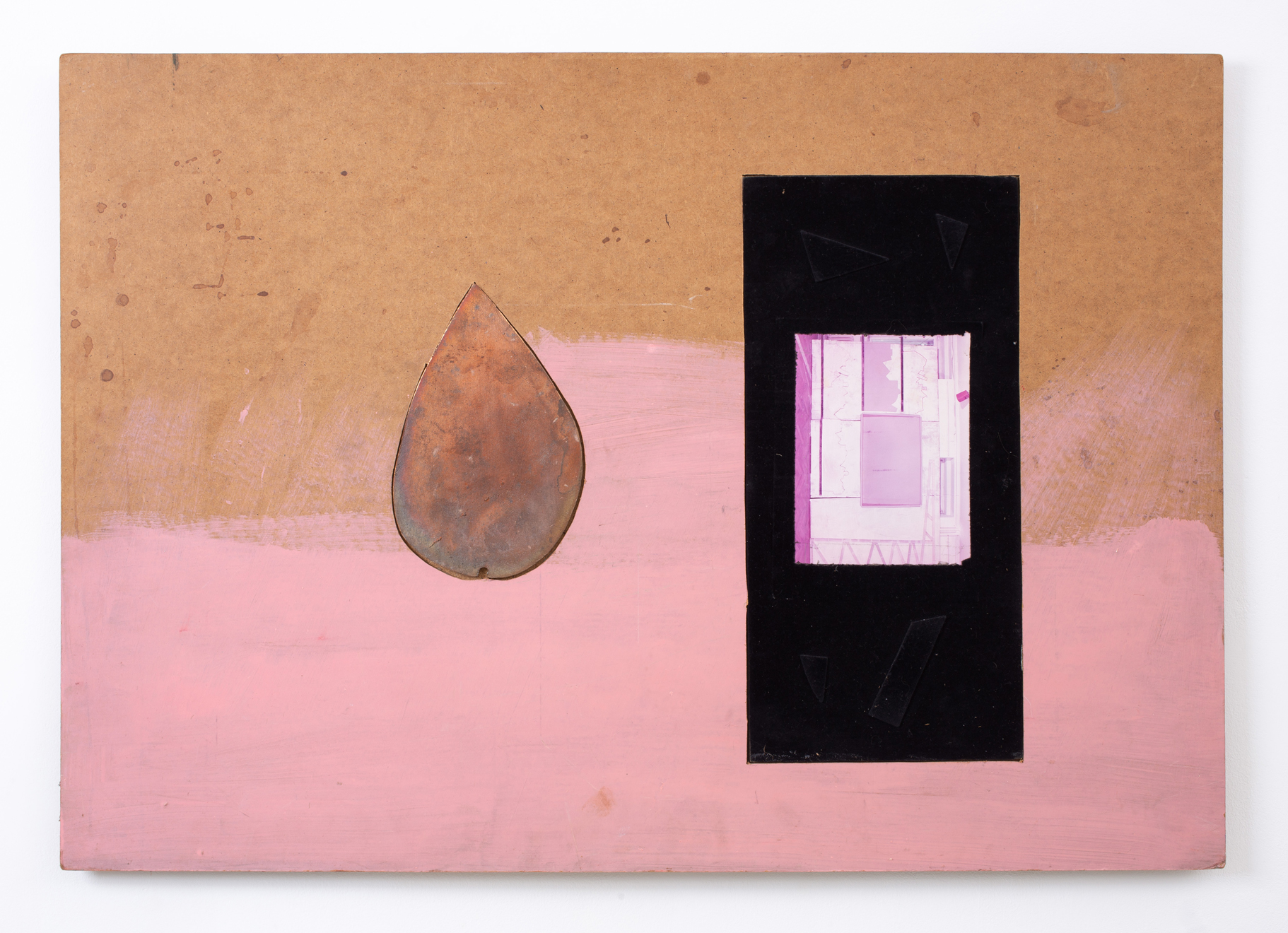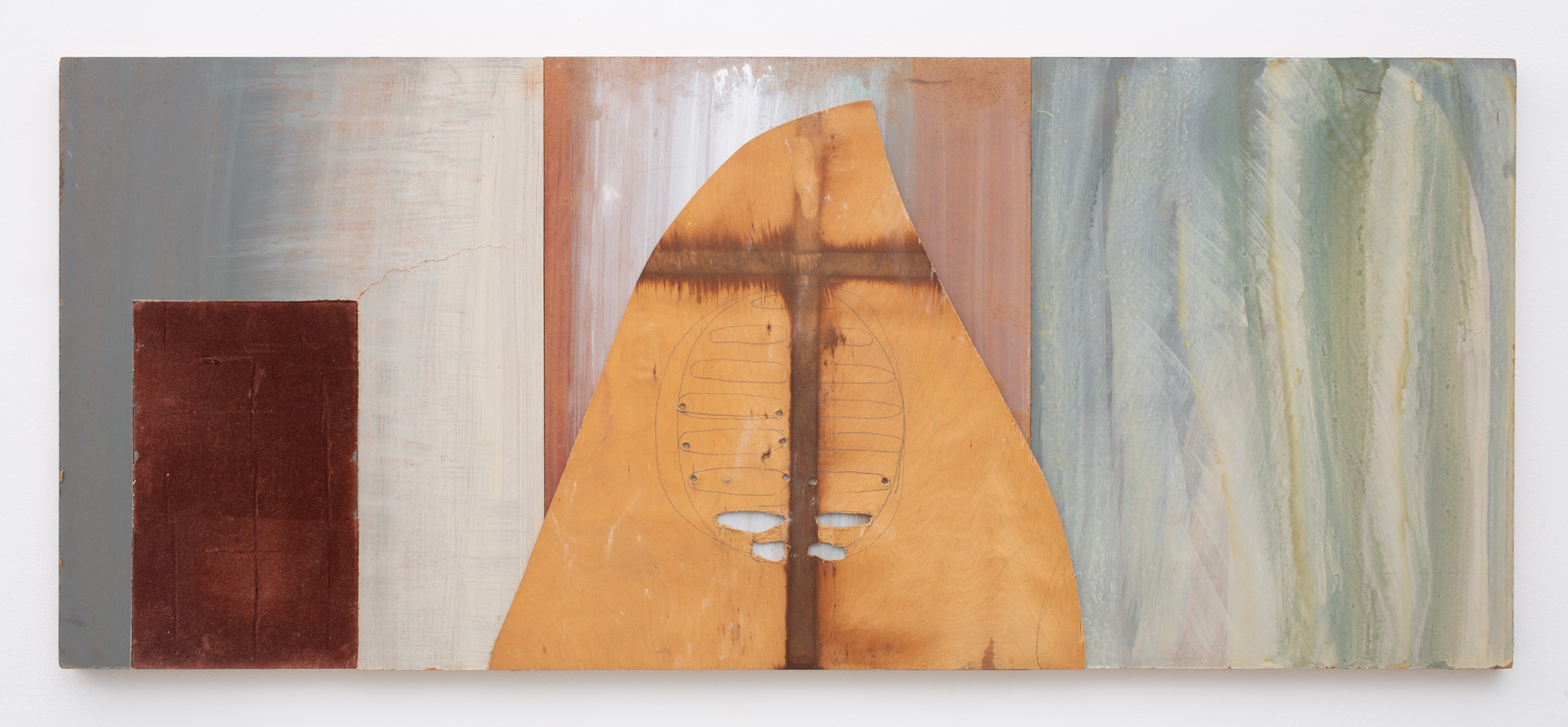Finissage and guided tour with Emese Mucsi on 28 May 2023, 6PM
“Lateral thinking is a problem-solving method in which we generate ideas by looking at existing things from an unusual perspective. Whereas logical (vertical) thinking takes the chosen idea forward in a linear fashion, lateral thinking generates new, fresh ideas by provocation or by changing the frame of reference. Vertical thinking tries to overcome the problem, while lateral thinking tries to circumvent it by a radically different approach. […] The term lateral thinking is specifically related to creativity at the level of ideas, which is not the same as the artistic creative process.”[1]
If we look through János Sugár’s oeuvre, especially his titles and other intertexts that appear in his present works, or even learn or deduce from somewhere what kind of objects he collects (continuously, for decades), it becomes clear to us that he is a fan of human openness, of risk-seeking, experimental lateral thinking and the solutions that emerge as a result. There is no doubt that these ideas, tricks and inventions are entertaining, even fascinating. If we look at it from this angle, Sugár is in fact a humanist, in the André Kertész sense: he likes to show, to observe and at the same time to draw attention to people, to the things they invent. Unlike Kertész, however, what he does is not a representational art: lateral thinking and related phenomena are present in his oeuvre not only as a reference and a theme, but primarily as a working method and a creative intention. In other words, in his own words, “if one’s mindset opens up under the influence of, say, a provocative work of art, and once or twice realises that there is such a thing as an ‘aha’ experience, one is better able to start solving future problems and to learn. That’s what art is about. It’s about how to continually manifest this openness of mind, how to face new, non-referential crises. There are many other levels or degrees of usefulness of art, but its main role, I feel, is to create a conflict that needs to be resolved somehow, and from that resolution to create some kind of immunity that can be used in a later situation.”[2]
In the Babilon Night Mail series, the confectionery packaging as a central motif is presented in an enlarged version in a new context. Plastic chocolate holders are one of the mainly functional objects about which little is known because of their insignificance, but their appearance and formal characteristics suggest a precise design intention and professional (sculptural) skill. In the case of the Babylon Night Mail series, elements of the plastic trays are transformed into topographical elements by means of a basic gesture of recontextualisation in play, and through the single-point lighting they become the surface formations of the night cityscape (Babylon) in Sugár’s photographs. The black-and-white view, the title and the orthophotographic character are all references to the 1936 British documentary Night Mail, which depicts the night journey of a mail train from London to Glasgow and the work of the people on it. The film features a technical ingenuity: the night mail train, in order to maintain its speed, does not stop at each station but, with the help of a special element protruding from the side, simply clips in leather bags full of letters placed in advance, as planned, next to the stops. The journey of the mail to the recipients during the night, while people are unsuspectingly sleeping peacefully, can be interpreted as a metaphor for the (possible [Babylon]) communicative situation between the artwork and the viewer, for the flow of information and thought.
The video project Art of War is also concerned with understanding a communicative situation, a tactical manoeuvre. “The aim of underground art […] was to create its own system of communication, free from the censorship of the use of signs, to create its own channels of communication by circumventing the legal and institutional system of the state, to develop its own forms of implementation, its own means, its own infrastructures, with which it could transmit its messages to a ‘horizontally expanding civil network’ that was taking shape.”[3] Since the advent of the Internet, these processes have been taking place on the ground, partly in public and partly invisibly. Cyberculture functions as a quasi-underground culture, providing members of online communities with (underground) communication pathways that allow the lives of billions of users to be shaped by personal, humanly direct relationships, regardless of their current geographical location. An extreme example of this horizontal operation, of ‘pioneering’, is inverse geometry in contemporary military interpretation, in which, as Sugár writes, novelty, non-referentiality and unexpectedness are important elements. A companion piece to the video project is the installation Horizontal Underground, which consists of fifteen glass panels stacked like a house of cards, reinforcements placed on the perforated panels and a metal curve running horizontally through the middle. Both works are so-called cognitive works that “trace the process of cognition.”[4]
And finally, the reliefs surrounding the work Horizontal Underground can be interpreted as a mind map in their own right. The works, made between 1990 and 2000, were, according to Sugár, made for himself, quasi for his desk drawer, in a liberated situation in which he was not under pressure to be publicised. In this sense, the presentation of the reliefs at the exhibition is similar to the publication of a diary, which is essentially an unveiling, since the author’s notes intended for himself become publicly readable and analysable – influencing our previous knowledge and interpretative processes about his life and his oeuvre. His sensual conceptual[5] reliefs are blends of things that are consistently present in Sugár’s work such as objects (confectionery packaging moulds, radios, microphotographs, architectural drawings, xerox copies, etc.), motifs (plum stone shape, wicker, crosses, etc.), tools (painting, flocking and so on), simple, worthless materials (wood fibre, plastic, etc.) and noble sculptural materials (terracotta, bronze, aluminium and other materials). The compositions deliberately avoid the classical, harmonious “good-looking”, in other words, they are ugly by some standards, or odd by most standards. And the use of defamiliarization (ostranenie) is an essential creative tool in the creation of provocative things that are surprisingly and interestingly out of the ordinary, which can generate conflicts and stimulate constant intellectual readiness.[6]
Emese Mucsi
[1] Pacsika Rudolf summarises Edward de Bono’s definition of lateral thinking. In Rudolf Pacsika: The bridge of associations between epistemes, DLA dissertation, MKE, 2016. 46.
[2] The meaning is linked to loyalty, which triggers the search for meaning. István Hajdu talks to János Sugár (Part 1)
In Balkon, 2005/5.
[3] Gábor Szabó: The Network as Critical Form – Aesthetics and Politics in Kádár-era Samizdat Literature. In Acta Universitatis Szegediensis: Acta Historiae Litterarum Hungaricarum, 2020. p. 177.
[4] Judit Geskó’s definition of János Sugár’s cognitive graphics.
[5] “I don’t want to dwell on concept art, because I think it’s a period that’s a has-been – and I don’t mean anything pejorative by has-been – it’s gone because it’s given up too much on the sensual, the direct, the total effect that art has always had in communication. Art is again looking for visual and sensual effects. (…) Since the 1980s, a kind of aesthetics has emerged that expects works of art – both visual and musical – to have a beauty that is reminiscent of pure thought, or the beauty of thought.” Miklós Erdély: Optimistic Lecture, quoted in Gábor Andrási: Forms of Thought (Nappali Ház, 1993/2)
[6] János Sugár: Complex processes outside and inside the field of attention (edited version of the lecture given on 7 November 2001), exindex.hu
photography by Miklós Sulyok
